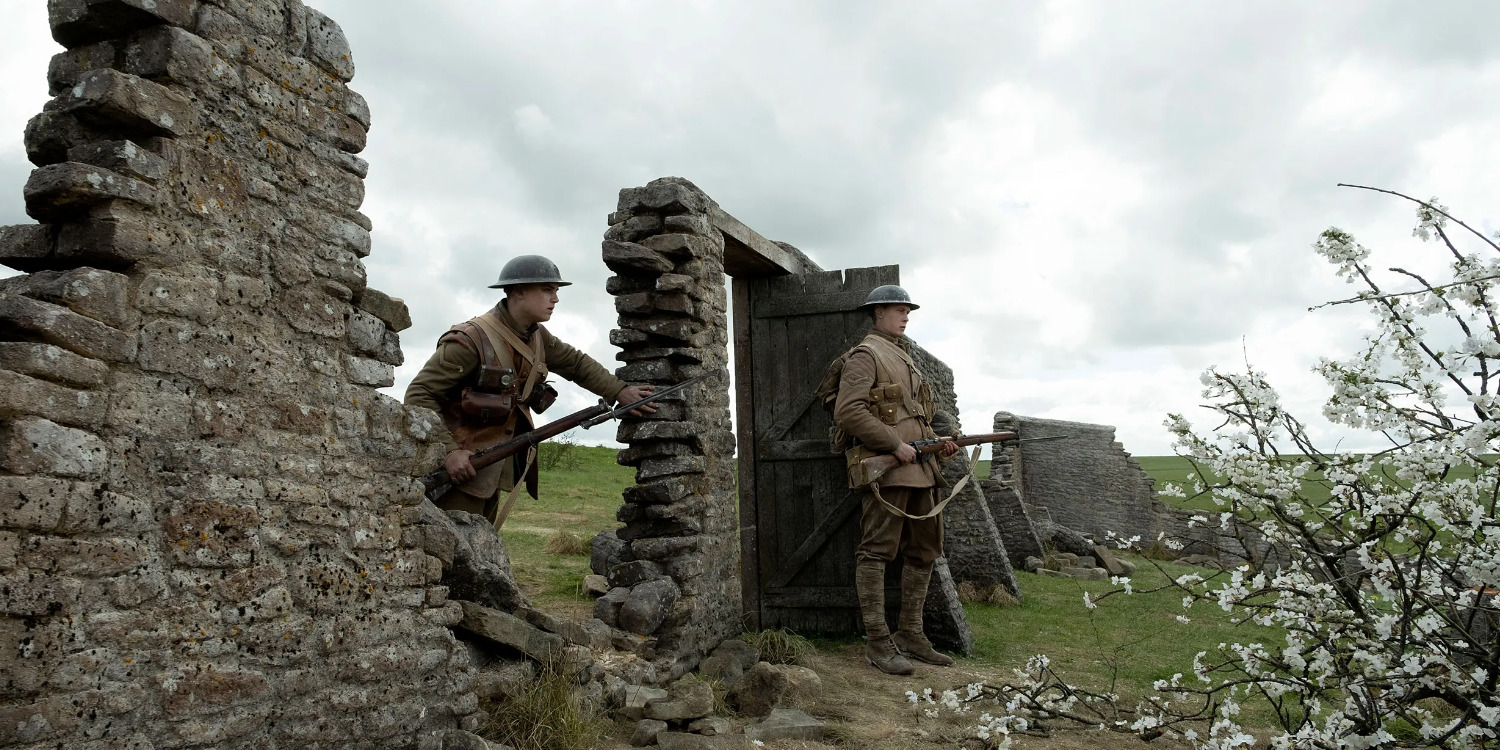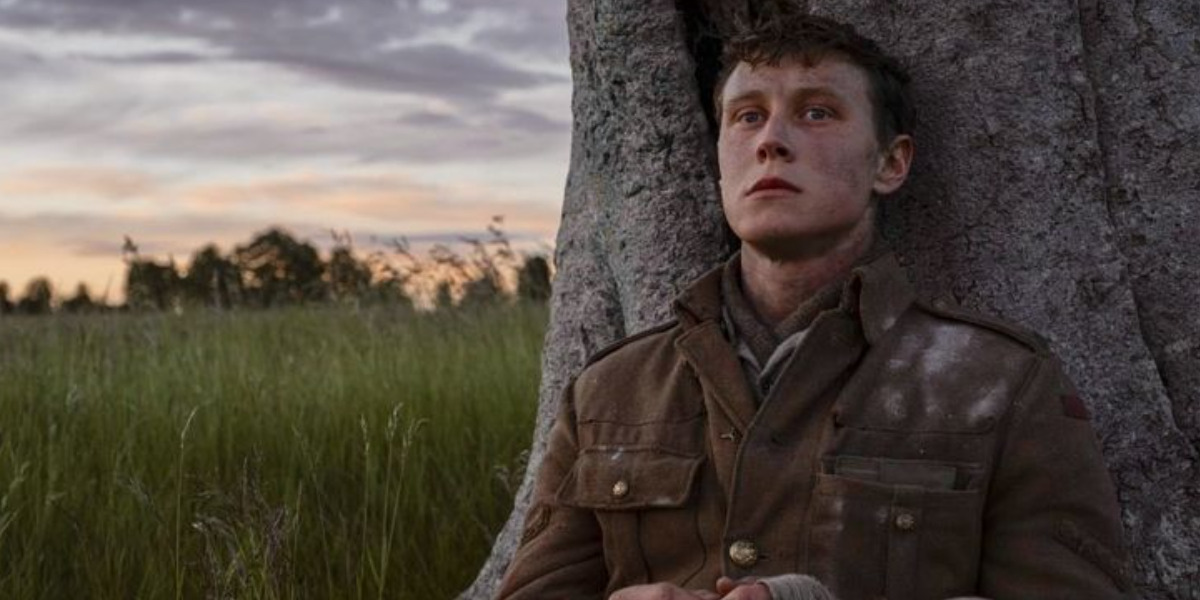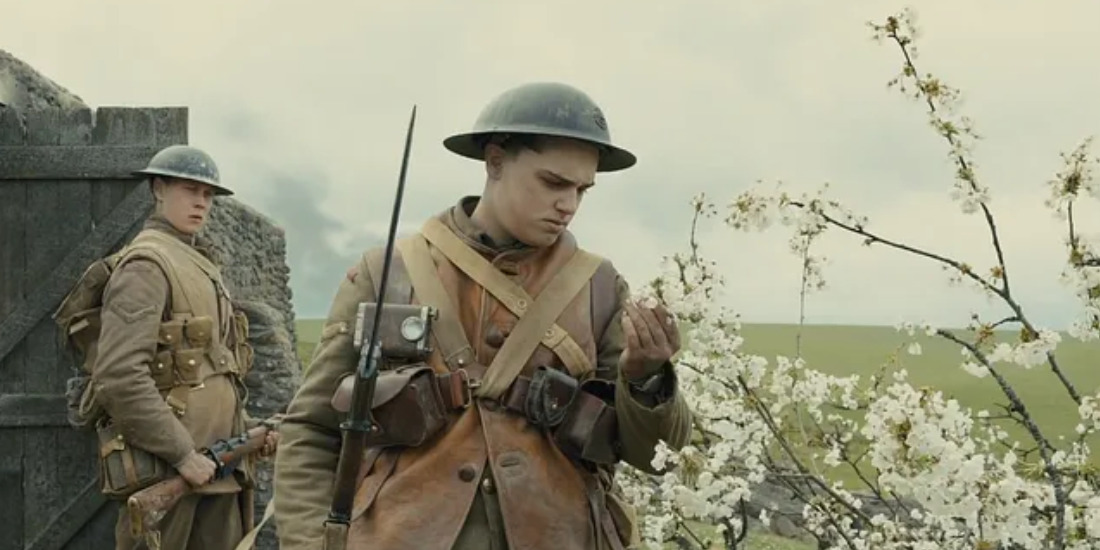‘1917‘ presents a poignant tale about a soldier’s journey through war’s horrid forsaken lands in an effort to pass along a life-saving message to hundreds of men. As the 2nd Devons Battalion prepares for an attack on their German adversaries, the General at the Western Front learns that their enemies are setting up a trap in their wait. Consequently, the story’s protagonists, Tom Blake & Will Schofield, soldiers of the British Army, enter the narrative as the chosen corporals tasked with delivering a message of retreat to the Devons’ Colonel, Mackenzie. Thus, the two embark on a perilous journey through enemy territory to save the lives of their fellow compatriots.
Throughout Blake and Schofield’s narratives within this World War I drama film, trees often come up as notable tools of symbolism. From the oak trees that open and close the tale to the cherry blossoms and their nuanced analogies— fans are bound to wonder about the significance behind these trees. SPOILERS AHEAD!
Tom Blake and The Cherry Blossoms of Hope
Shortly after Tom Blake and Will Schofield venture outside of their trenches and past the no man’s land, they run into a cherry blossom garden that the Germans have left stricken down. The bisected trees’ white blossoms lay on the ground, similar to how the battlefield was ripe with rotting bodies of dead soldiers. In a conversation between the two, Blake shares his knack for identifying the different species of cherry blossoms, bringing into focus how even the trees come in variety. Furthermore, when asked about the plants’ eventual fate, Blake affirms that despite their current perceived destructed state, the trees will grow better and larger in numbers.

Although one must needle the instance for the analogy— once apparent, it remains easy to spot. Within that scene, the cherry blossoms become a metaphor for life in general. Even though the current war— mammoth in its magnitude— has plundered the lives of many soldiers and civilians, like the cherry blossoms, humanity will recover and flourish again. The same remains historically sound, considering the population boom of the 1920s. Additionally, by placing the German forces as the assailants behind the cherry blossom trees’ needless culling, the scene adds a layer of evident parallels between the British soldiers and the trees surrounding them.
Consequently, once the story arrives at Blake’s death— caused by his compassion for the life of a German fighter pilot— the cherry blossom metaphor enters the narrative again. Following Blake’s death, Schofield is left to make the journey to the Devons on his own while grieving the recent death of his close friend. However, once the dangerous trip lands him in a river in a passed-out state, the falling of cherry blossoms upon his face jolts him back to consciousness.
The instance serves as a reminder of Blake and his influence over Schofield, whose motivations in delivering the life-saving message stem partly from the promise he made to Blake about saving his brother, who is a part of the Devon Battalion. Even though Schofield is confronted with a barricade of dead bodies right afterward, the blossoms serve as a reminder of his friend and the promise between them. Thus, the cherry blossoms, at once, become symbols of unending hope even in the face of confirmed doom.
Schofield’s Tree Bookends His Story
The second tree that secures a significant presence within the narrative is two separate oak trees that play similar yet opposite roles in Will Schofield’s narrative. Will’s introduction into the story arrives with the character leaning against an oak tree while in his own camps on the other side of the Écoust town. At this point in time, Schofield is a jaded soldier who is painfully aware of the sacrifices he’s had to make for the army. He’s defined by his decision to trade his medal for a bottle of wine because he’s uninterested in bringing the silverware back to his family. To Schofield, his family remains a painful reminder because every time he visits them, he has to deal with the fact that he will be returning to the battlefield soon after.

However, the overwhelming journey that Schofield undertakes by Blake’s side— from their own trenches to Devons’ camp— becomes a transformative experience for the man. Where at the beginning, he was the skeptical one with doubts about the journey’s possibility, after Blake’s death, Schofield adopts his unassailable hope— if only to ensure Blake’s brother survives. Thus, by the story’s end, when the character returns to another Oak tree after meeting Joseph Blake, he allows himself a moment of respite.
The distinction between this ending scene and Schofield’s introduction into the narrative emerges from the character’s willingness to reminisce about his family in the end. After losing Blake, encountering the French refugee with a baby, and saving the lives of hundreds of men, Schofield’s worldview changes drastically. Now, the man values his family in a different light, open to savoring their presence in his life rather than mourning their absence. Consequently, Schofield’s tree remains a marker of his character development throughout the film.
Read More: The True Story Behind 1917, Explained


You must be logged in to post a comment.